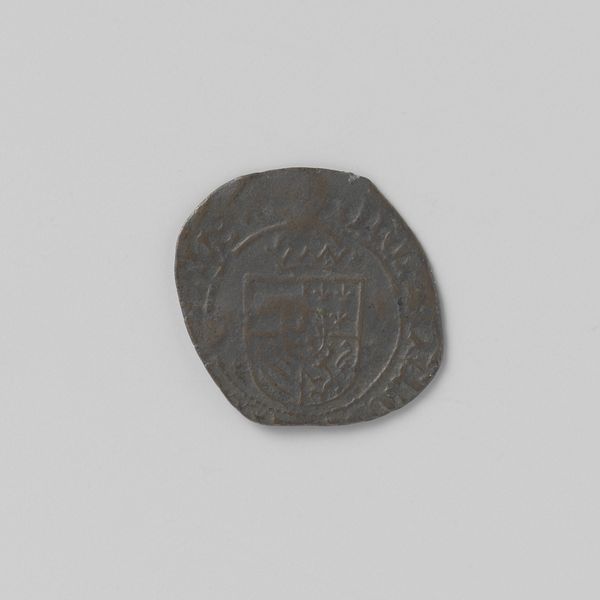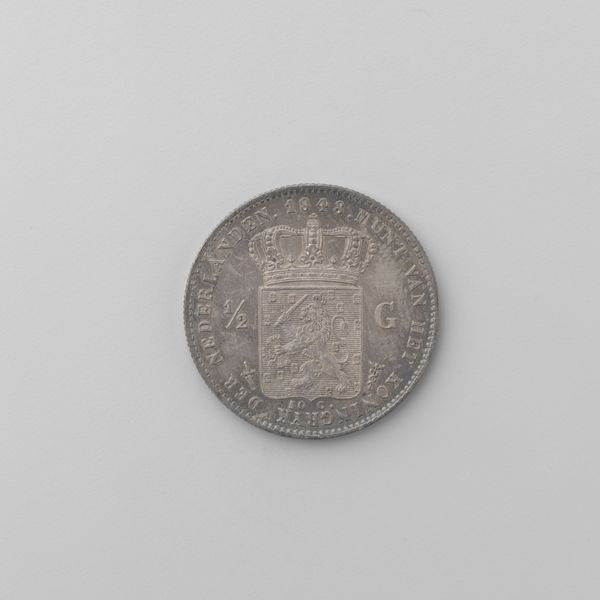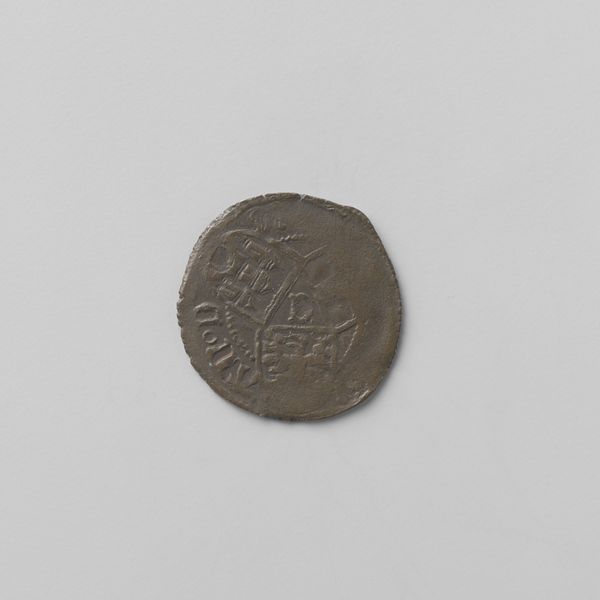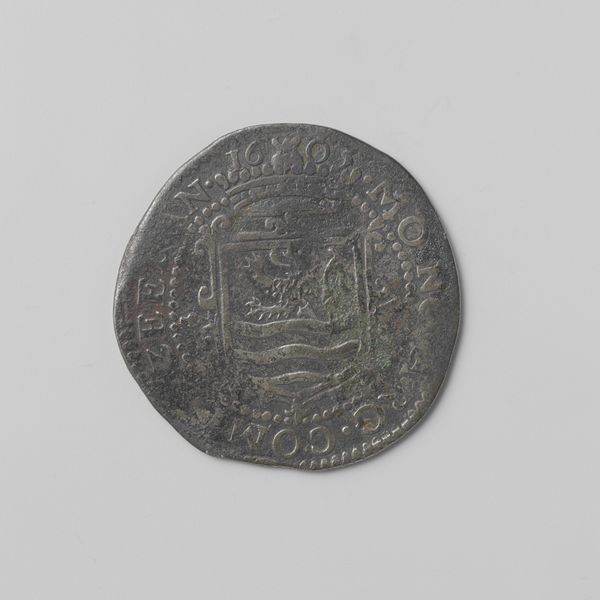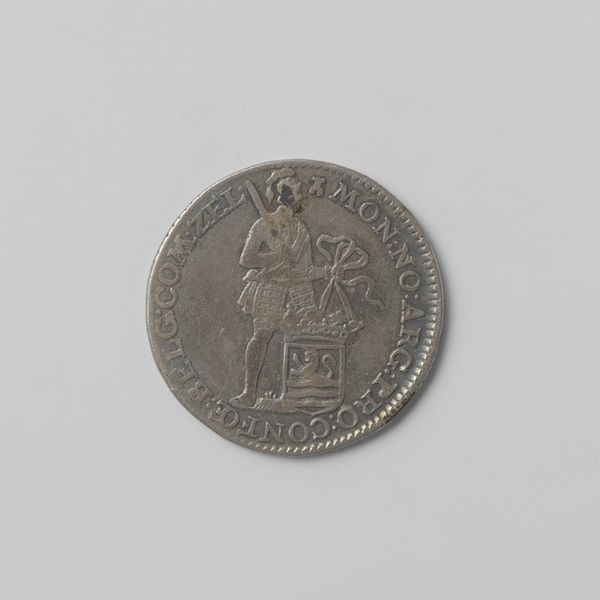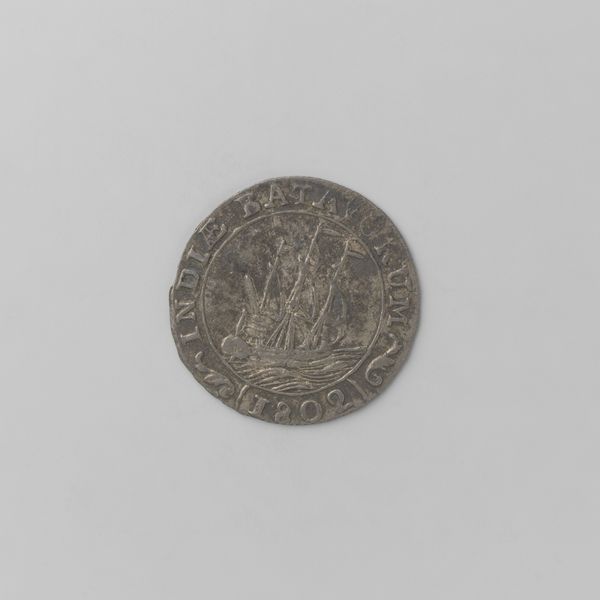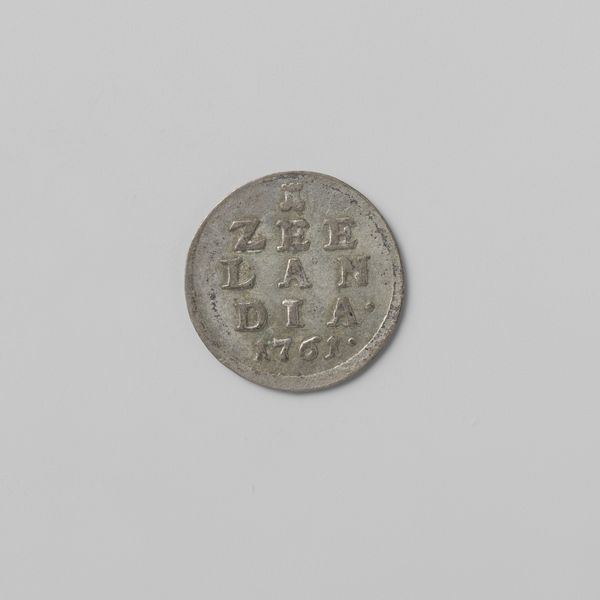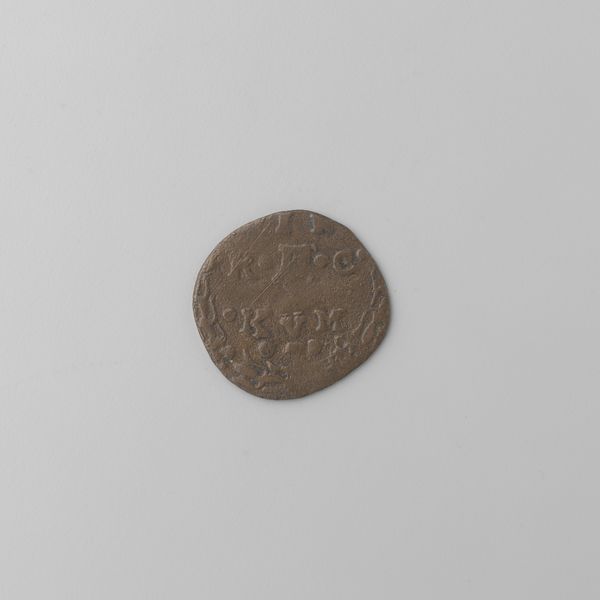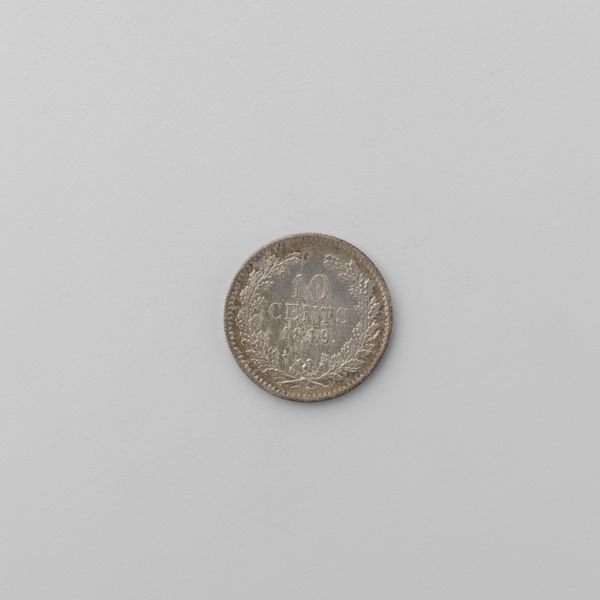
silver, print, metal, bronze, engraving
#
silver
#
dutch-golden-age
# print
#
metal
#
bronze
#
ancient-mediterranean
#
history-painting
#
engraving
#
miniature
Dimensions: diameter 1.7 cm, weight 0.62 gr
Copyright: Rijks Museum: Open Domain
Curator: Here at the Rijksmuseum, we have a small but potent artifact: a 1/16 gulden coin minted in 1802 for the Dutch East Indies, during the time of the Batavian Republic. Editor: The first thing that strikes me is the incredible detail on such a tiny surface. The ship is delicately rendered, considering its scale. There's a surprising sense of depth, and it does have quite the visual harmony. Curator: That detail speaks to the Batavian Republic's reliance on colonial trade. Even the smallest denomination was imbued with imagery reinforcing their economic power and overseas interests. Think about the message that sends to both those using it locally, and those overseas who recognize the symbol of Dutch ships. Editor: Interesting point. From a formalist perspective, though, I am wondering why the designer decided to arrange the legend, IND: BAT: FORUM, in such a cramped circular arrangement? The spacing feels uneven, which affects readability and diminishes the overall aesthetic impact. Curator: Because, while the Dutch Golden Age masters were gone, the Dutch continued to spread their empire. A formal examination like that reveals more subtle power dynamics – that the artistry on something meant for wide circulation suffered tells its own story of declining standards met with continued extraction and profiteering, a potent signifier when dealing with Dutch-Indonesian history. Editor: True, the historical context definitely amplifies the object's meaning. Seeing it just as an isolated artifact, you might miss the layers of social and economic implications embedded within its design. And even with that "decline", one would think of the immense technical prowess to make something so detailed, in miniature. Curator: Precisely. It is an incredible miniature—a testament to both artistic skill and the economic machinery of a colonial power at the start of the 19th century. Editor: It makes you reflect on how even something so small can carry so much historical and political weight, from production to its circulation across Dutch trading routes. Curator: Exactly, a small artifact with far-reaching implications.
Comments
No comments
Be the first to comment and join the conversation on the ultimate creative platform.


